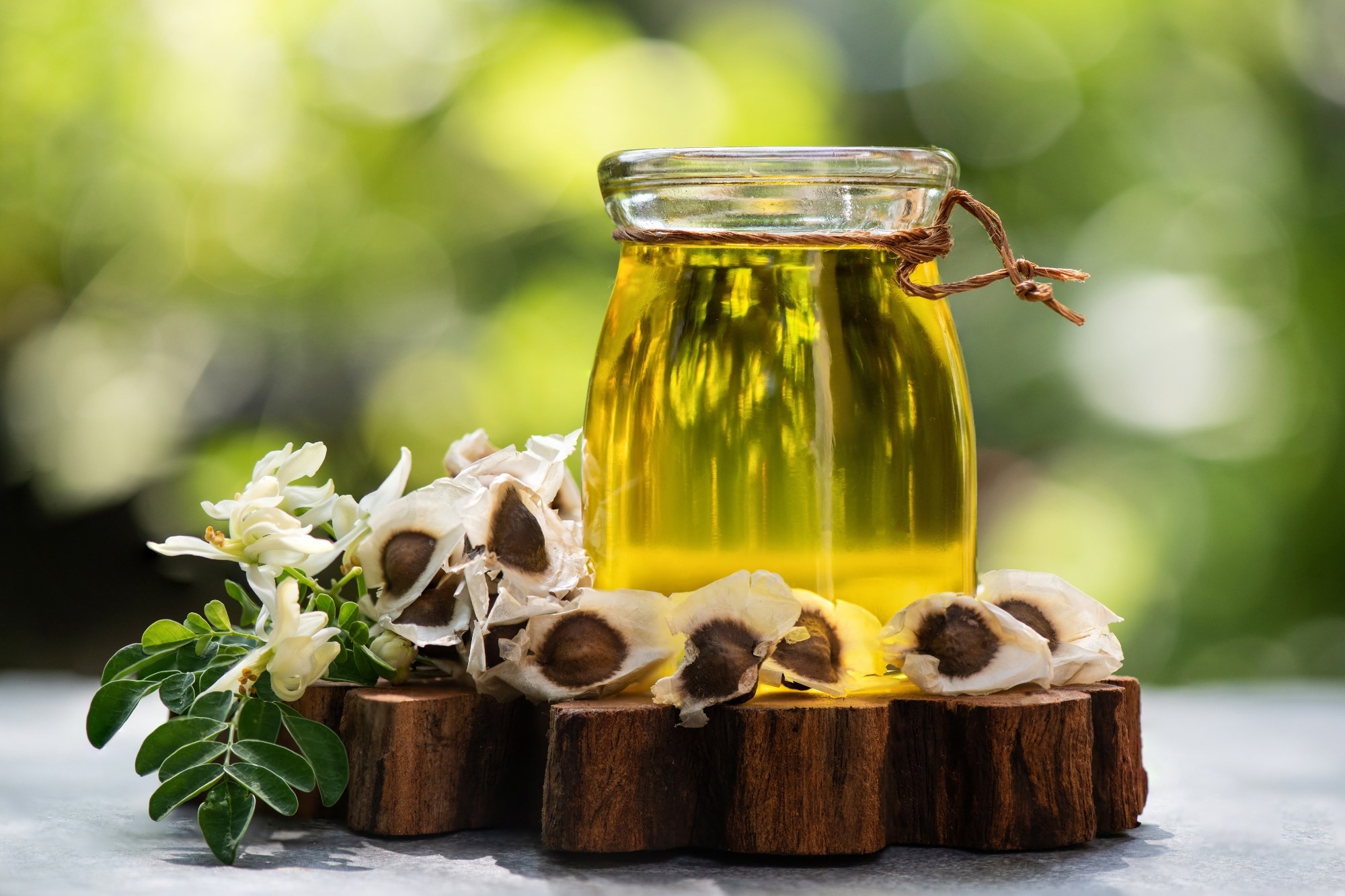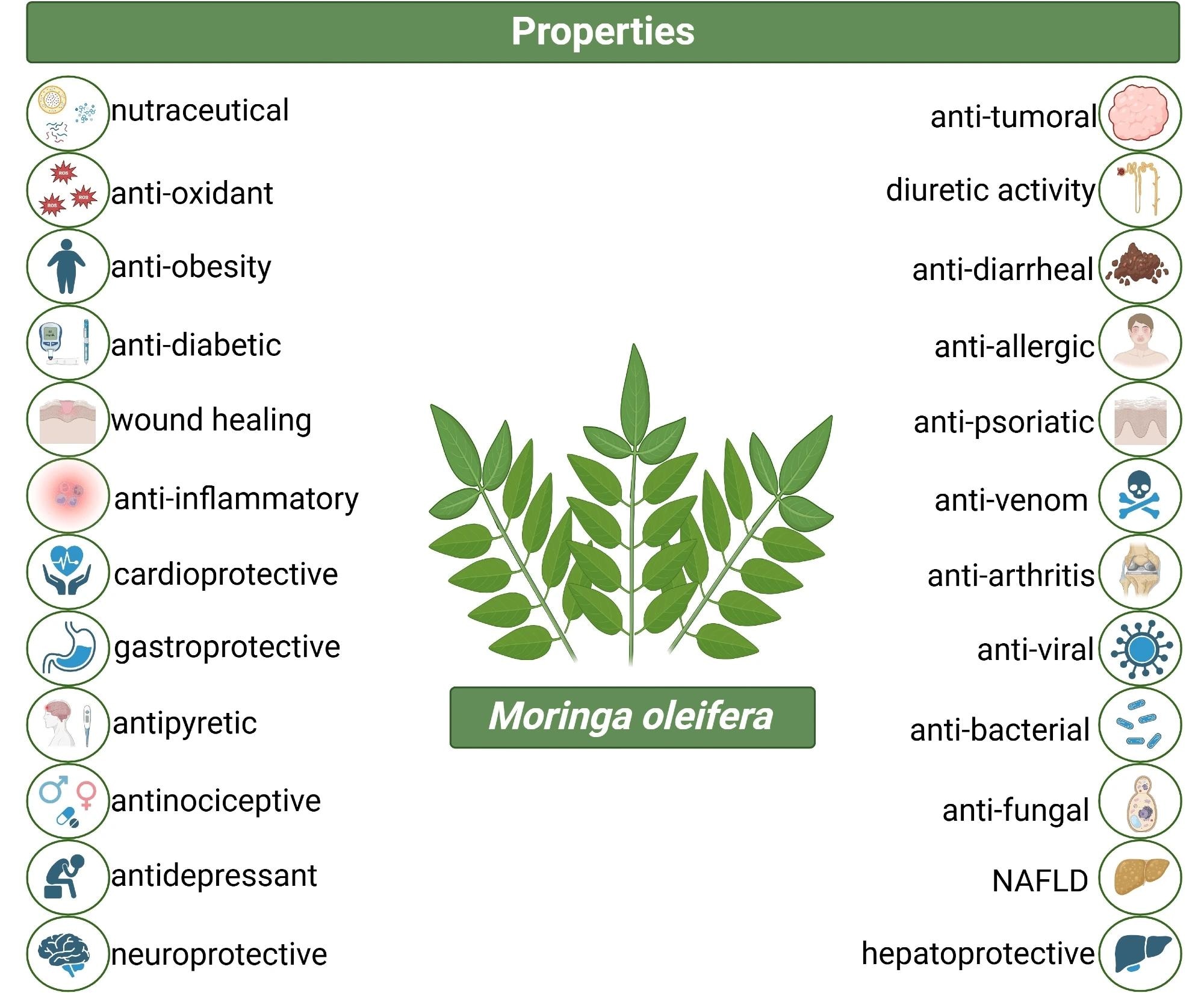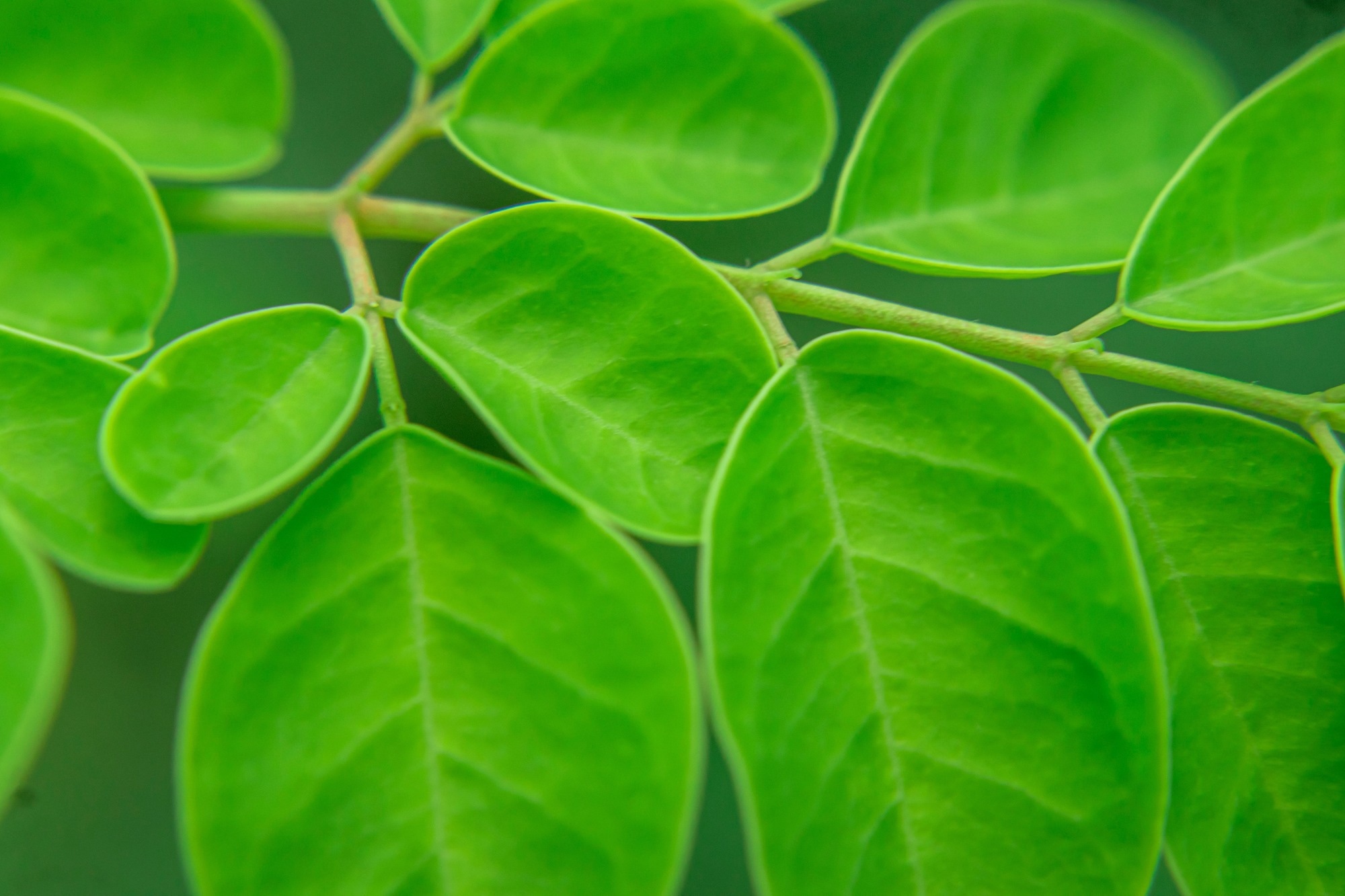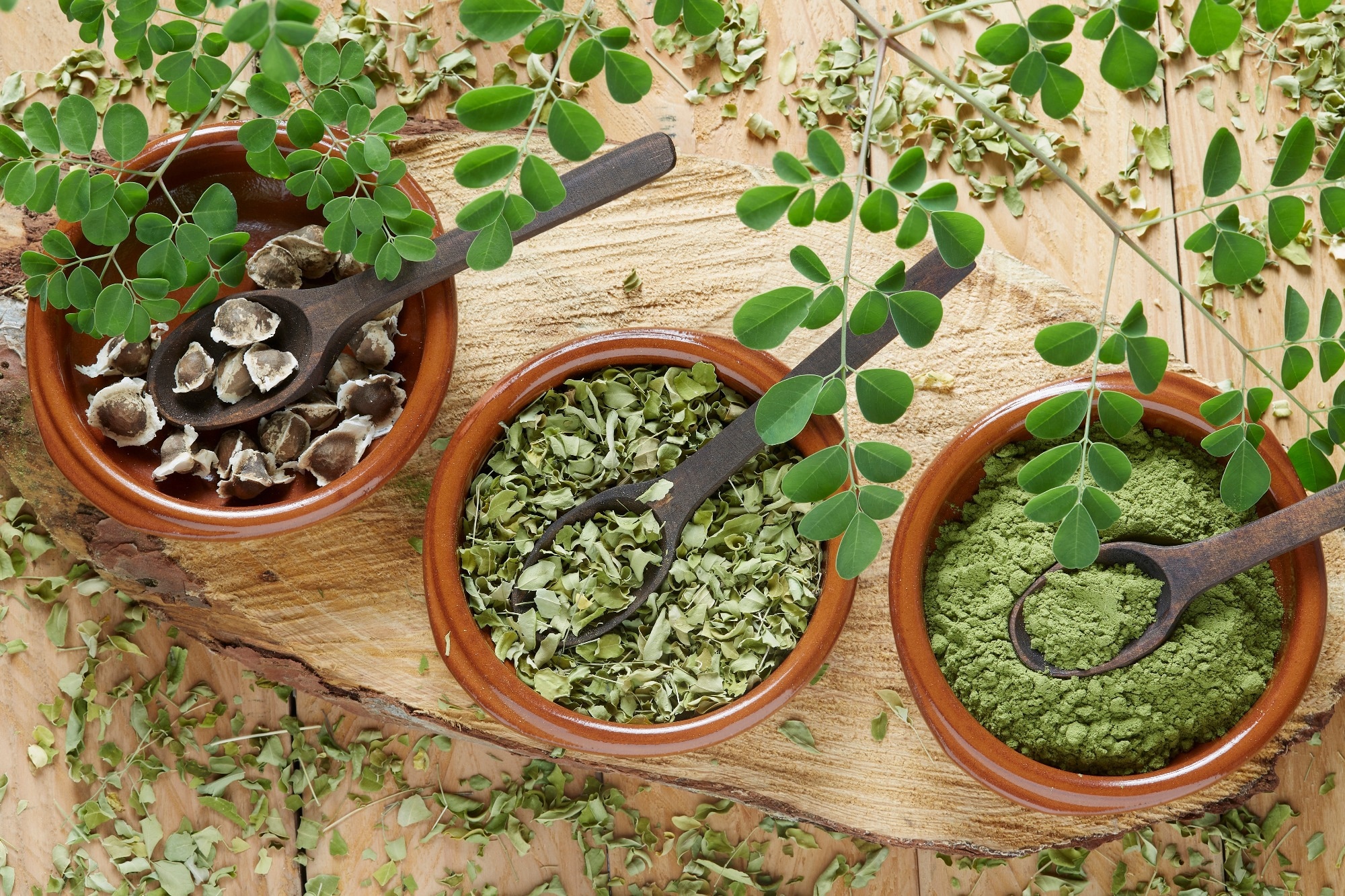Introduction
Nutritional and bioactive compounds of moringa
Moringa and immune support
Anti-inflammatory properties of moringa
Moringa's role in metabolic health
Safety, dosage, and potential side effects
Future directions
References
Further reading
Moringa oleifera, known as the miracle tree, contains dense nutrients and bioactive compounds that support immune health, reduce inflammation, and improve metabolic balance. This article reviews its therapeutic potential, safety, and future research directions.
 Moringa. Image Credit: wasanajai / Shutterstock.com
Moringa. Image Credit: wasanajai / Shutterstock.com
Introduction
Native to India, Pakistan, Bangladesh, and Afghanistan, Moringa (Moringa oleifera) is a fast-growing, drought-resistant tree that is now found in tropical and subtropical areas of the world, including parts of Africa, Southeast Asia, and Latin America. It has long been used in Ayurvedic and folk medicine to treat a variety of conditions, such as high blood pressure, dental pain, and stomach ulcers. Its anti-inflammatory, antimicrobial, and hypotensive qualities are thought to be attributed to the abundance of bioactive substances found in its leaves, pods, seeds, and roots, including flavonoids, glucosinolates, phenolic acids, and alkaloids.

Therapeutic potential of Moringa oleifera in chronic disease management and beyond.5
Nutritional and bioactive compounds of moringa
The leaves of Moringa oleifera are rich in beta-carotene, vitamins C and E, calcium, and potassium, with nearly all parts of this plant used for nutritional purposes. Other bioactive compounds present in moringa include flavonoids like quercetin, kaempferol, and myricetin, carotenoids, and vitamins B, as well as phenolic acids such as gallic, chlorogenic, and caffeic acids, glucosinolates, tannins, and saponins.

Close-up of Moringa leaves (Moringa oleifera). Image Credit: Fawwaz Media / Shutterstock
Polyphenols and flavonoids scavenge reactive oxygen species (ROS), whereas chlorogenic acid modulates glucose metabolism by inhibiting hepatic glucose-6-phosphate translocase to reduce gluconeogenesis and post-prandial glycemia.1,2
Glucosinolates and their isothiocyanate derivatives further reduce inflammatory signaling by blocking inhibitor of nuclear factor kappa B alpha (IκB-α) phosphorylation and nuclear factor kappa B (NF-κB) nuclear translocation to reduce tumor necrosis factor alpha (TNF-α), interleukin-6 (IL-6), interleukin-1 (IL-1), and prostaglandin-endoperoxide synthase 2 (PTGS2) expression. Tannins and saponins contribute additional anti-cancer, anti-atherosclerotic, and hepatoprotective effects.1,2
Moringa and immune support
In vitro, moringa leaf extracts reduce pro-inflammatory signaling in macrophages by suppressing inducible cyclooxygenase-2 (COX-2), interleukin-1β (IL-1β), IL-6, prostaglandin E2 (PGE2), and TNF-α levels.
Antioxidant nutrients and phytochemicals further support the host immune system by neutralizing ROS and upregulating endogenous enzymes such as catalase and superoxide dismutase. Glucosinolate derivatives like glucomoringin and phytosterols such as β-sitosterol also exhibit anti-inflammatory, antioxidant, and immunomodulatory activities, supporting a multi-pathway effect on immune tone.1,3
Evidence for immunomodulatory effects in humans remains limited; current findings are largely from preclinical models, with small or heterogeneous clinical data.
 Forms of Moringa Image Credit: Olga Rincon Castellanos / Shutterstock.com
Forms of Moringa Image Credit: Olga Rincon Castellanos / Shutterstock.com
Anti-inflammatory properties of moringa
The multifaceted anti-inflammatory activity of moringa is attributed to the activity of phytochemicals such as isothiocyanates and flavonoids like quercetin and kaempferol. Fruit and leaf preparations prevent NF-κB nuclear translocation, whereas quercetin/kaempferol and isothiocyanates inhibit COX/lipoxygenase pathways and reduce TNF-α and IL-1β.4
In vivo studies have reported dose-dependent anti-edematous effects through TNF-α/IL-1β downregulation and anti-arthritic activity. For example, reduced disease activity, lower pro-inflammatory cytokine levels, restoration of intestinal barrier function, and favorable shifts in gut microbiota composition have been reported in a preclinical colitis model.
For arthritis, suppression of NF-κB, COX-2, and cytokines aligns with reduced joint swelling and inflammatory scores in preclinical models. Kaempferol, astragalin, and bioactive peptides in moringa also reduce mucosal inflammation while supporting the microbiome and epithelial barrier, suggesting an adjunct role alongside standard care for inflammatory bowel disease (IBD). Isothiocyanates such as moringin (4-(α-L-rhamnosyloxy)benzyl isothiocyanate) have been specifically implicated in NF-κB and NO pathway modulation.
Moringa's role in metabolic health
Moringa leaf polyphenols like quercetin, kaempferol, and chlorogenic acid reduce carbohydrate absorption by inhibiting α-glucosidase/α-amylase. Kaempferol also activates adenosine monophosphate-activated protein kinase and promotes glucose transporter type 4 (GLUT4) activity to improve insulin sensitivity.5
Moringa exhibits hypolipidemic and anti-atherosclerotic activity, partly by limiting cholesterol micelle formation and engaging peroxisome proliferator-activated receptors that regulate lipid metabolism and inflammation. Reported outcomes include lower triglycerides and improved oral glucose tolerance in metabolic syndrome models, with reductions in abdominal circumference measurements.5
In high-fat-diet mice, isothiocyanate-enriched seed preparations improved glucose tolerance across 12 weeks and modulated the gut microbiome. While preclinical data are consistent, human findings on glycemia and insulin are mixed due to limited trials, varied dosing, and heterogeneous designs.
Moringa: All benefit or all hype?
Safety, dosage, and potential side effects
Across acute and sub-acute studies, moringa leaf, seed, and stem bark extracts did not cause any significant adverse effects, even when administered at high experimental doses. At these high doses, enzyme shifts were observed, including greater alanine aminotransferase and alkaline phosphatase levels and a reduction in creatinine.1
Moringa demonstrates antihyperglycemic activity and angiotensin-converting enzyme (ACE)-related antihypertensive effects. As a result, clinicians advise that patients prescribed antidiabetic or antihypertensive therapy use moringa cautiously while monitoring their glucose and blood pressure levels.
Reported formulations are generally well tolerated when used within studied ranges. However, users may experience gastrointestinal discomfort or lab abnormalities if using concentrated extracts.1
Human supplementation studies have used modest amounts of moringa leaf preparations; a definitive upper safe intake in grams per day is not established.
Future directions
Nutrient density, antioxidant capacity, and bioactive phytochemicals converge to reduce pro-inflammatory signaling, support immune function, as well as improve glucose and lipid handling. Nevertheless, heterogeneity in plant parts, extraction methods, dosing, and study quality prevents translation to routine care.
Future research should prioritize standardized preparations, pharmacokinetic profiling, and safety monitoring. Thus, clinically relevant outcomes should be assessed in large, randomized, and multicenter human trials across diverse populations, comorbidities, and therapies to define efficacy, dose, and durability.1,3,5
References
- Pareek, A., Pant, M., Gupta, M.M., et al. (2023). Moringa oleifera: An updated comprehensive review of its pharmacological activities, ethnomedicinal, phytopharmaceutical formulation, clinical, phytochemical, and toxicological aspects. International Journal of Molecular Sciences 24(3). DOI:10.3390/ijms24032098, https://www.mdpi.com/1422-0067/24/3/2098
- Vergara-Jimenez, M., Almatrafi, M. M., & Fernandez, M. L. (2017). Bioactive components in Moringa oleifera leaves protect against chronic disease. Antioxidants 6(4). DOI:10.3390/antiox6040091, https://www.mdpi.com/2076-3921/6/4/91
- Murti, Y., Arora, S., Akram, W., et al. (2024). Exploring the therapeutic potential of Moringa oleifera Lam. in Traditional Chinese Medicine: A comprehensive review. Pharmacological Research-Modern Chinese Medicine 12. DOI:10.1016/j.prmcm.2024.100473, https://www.sciencedirect.com/science/article/pii/S2667142524001155
- Villegas-Vazquez, E. Y., Gómez-Cansino, R., Marcelino-Pérez, G., et al. (2025). Unveiling the miracle tree: therapeutic potential of Moringa oleifera in chronic disease management and beyond. Biomedicines 13(3). DOI:10.3390/biomedicines13030634, https://www.mdpi.com/2227-9059/13/3/634
- Vargas-Sánchez, K., Garay-Jaramillo, E., & González-Reyes, R. E. (2019). Effects of Moringa oleifera on glycaemia and insulin levels: A review of animal and human studies. Nutrients 11(12). DOI: 10.3390/nu11122907, https://www.mdpi.com/2072-6643/11/12/2907
Further Reading
Last Updated: Aug 25, 2025